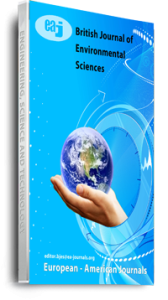This research examines the uncertainties present when computing atmospheric correction parameters (upwelling (Lu) and downwelling (Ld) radiances, and transmittance ( )) for the 9 flaring sites in Rivers State, Nigeria; and to estimate the total uncertainty introduced into the land surface temperature (LST) when they are applied. 7 Landsat 5 Thematic Mapper (TM) and 7 Landsat 7 Enhanced Thematic Mapper Plus (ETM+) from 04 March 2000 to 08 August 2012 with < 10 % cloud contamination were considered in order to evaluate a trend. All the sites are located within a single Landsat scene (Path 188, Row 057). Option B of the Atmospheric Correction Parameter (ATMCORR) Calculator was adopted to obtain Lu, Ld and for Landsat scenes analysed. The Lu, Ld and obtained were applied to the calibrated at-sensor radiance band 6 (high gain) data to compute the surface-leaving radiance (Lλ) with the emissivity ( ) of each station estimated by using standard values for determined land surface cover. The Planck equation was inverted using the calibration constants to derive LST. To determine the uncertainties introduced by applying the calculated Lu, Ld and , an uncertainty analysis was undertaken. The difference between the Lu, Ld and interpolated for each study site and that of reference site (Chokocho) were calculated and used for the analysis with 4 Lλ scenarios. The results show that the larger the % of water body at the site, the higher is the uncertainty introduced into LST retrieved from Landsat scene; and that the maximum uncertainty obtained for all sites are below the expected maximum error (0.5 0.8 K). Therefore, it was concluded that ATMCORR Calculator, have the ability to provide an automated method to derive Lu, Ld and needed for generating LST in the Niger Delta.
Keywords: Niger-Delta, atmospheric correction, atmospheric correction parameters (atmcorr) calculator, emissivity, land surface temperature (lst)

